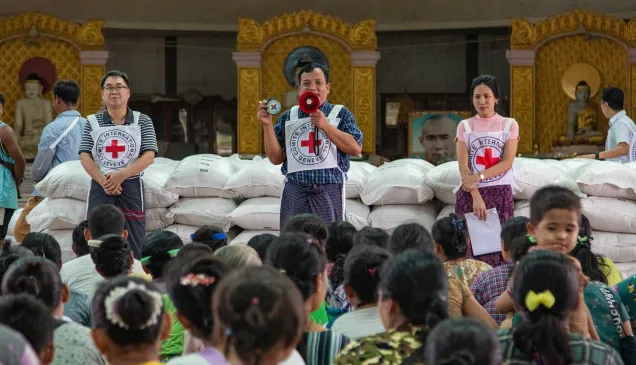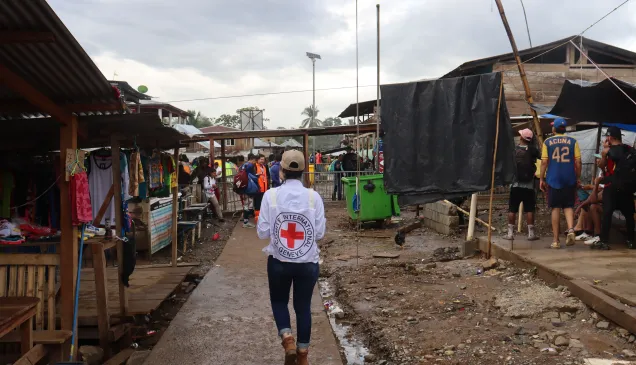Sri Lanka: Asia Pacific convenes for better correctional environment

People deprived of their liberty have to be treated humanely and with dignity at all times. The International Committee of the Red Cross (ICRC) supports prison authorities at different levels to improve and sustain decent living conditions in prisons. We visit detainees in places of detention and share our findings and recommendations of the visits with detaining authorities. Because our aim is to help authorities improve conditions and treatment in prisons, the ICRC has been an official strategic partner of the Asian Conference of Correctional Facilities, Architects and Planners (ACCFA) since 2015. We believe ACCFA is the best Asian platform to discuss, promote and share best practices in relation to prison infrastructure among professional and other public officers who are involved in planning.

CC BY-NC-ND / ICRC
The importance of sound prison infrastructure for the well-being and rehabilitation of detainees cannot be underscored enough. It has the potential to provide a conducive environment for humane conditions of detention for the physical and psychological integrity of persons detained so that for instance they have access to health care, the opportunity to maintain family and social relationships, to practice a minimum of physical exercise, to have activities and hobbies, to be able to do work and to benefit from training.
This year, Sri Lanka's Ministry of Prison Reforms, Rehabilitation, Resettlement and Hindu Religious Affairs and the Department of Prisons hosted the seventh ACCFA in Colombo. Over 100 professionals working in different areas of correctional facilities all over the Asia Pacific region convened at the conference to present on and discuss five areas vital to developing a better correctional environment.
At the opening ceremony, the Minister of Prison Reforms, Rehabilitation, Resettlement and Hindu Religious Affairs, DM Swaminathan, emphasized the value of each participant being exposed to the reform and architecture of correctional environments in the region. "Current trends in solving issues connected with the correctional field, new technologies, know-how and lessons learnt will be shared among the professionals gathered here during this conference," he said.

CC BY-NC-ND / ICRC
Participants presented and discussed current issues they face in Asia Pacific. This dealt with prison staffing, prison infrastructure, budget-related matters and other major challenges. It gave participants the opportunity to share experiences and best practices and how they are overcoming these challenges.
In-house maintenance and waste management were next on the agenda. An efficient maintenance system is essential to ensuring suitable living conditions in prison. By maintaining prison facilities in a proper and timely manner, the cost of running the prison can be reduced in the long term and the buildings preserved. This, along with an effective waste management system also impacts on the health of a prison population. When too many people are confined in closed quarters, the risks of contagious diseases to spread increases considerably.
Another key area discussed was implementing international recommendations and standards in relation to prison design. It touched on the important aspect of balancing humanitarian needs and security concerns in prison.

CC BY-NC-ND / ICRC
Participants were pushed to think beyond incarceration at the session on how to design correctional facilities that are conducive to rehabilitation. Prison infrastructure has an impact not only on detainees' physical health, but also on their mental health. When prisons are designed with its population's needs at the centre, the ultimate outcome of rehabilitating and reintegrating prisoners into society could be achieved.
The conference this year counted on the presence of a group of architecture students from King's Mongkut University of Technology Thonburi (Thailand) who delivered a vibrant presentation about a prison design project they are working on. They showed the audience that when the needs of space, sanitation and proper facilities are taken into consideration from the onset of a prison construction project, the outcome positively impacts not only on the inmates, but also on the daily life of the staff of the correctional administration.
Lastly, acknowledging the fact that designing a correctional facility involves many different stakeholders, cooperation among these various entities was discussed. Correctional facilities could be considered as a mini-society behind security measures; access to essential needs and services, such as water, electricity, food, hygiene, health has to be granted by the authorities. In parallel, social aspects should not be neglected; links with the families, contact with the judicial system or access to rehabilitation programmes allowing the inmates a proper reintegration into society are some of the issues that should be considered when designing new correctional facilities. Looking into how all these different aspects and understanding how they interconnect is the only way to overcome the challenges that lead to having suitable correctional infrastructure that contribute positively to the rehabilitation and reintegration of detainees into society.
By participating in a forum such as ACCFA, the ICRC tries to ensure prison populations' physical and mental health remains at the centre of the discussion.



